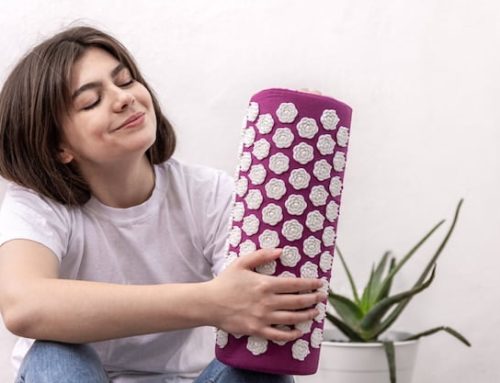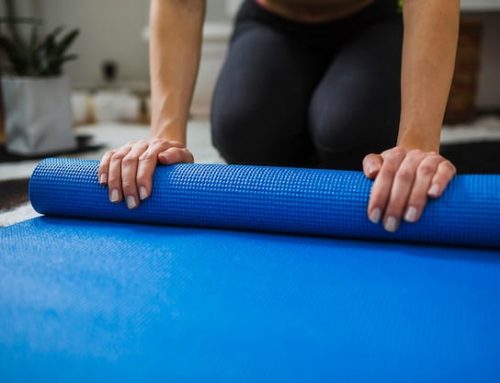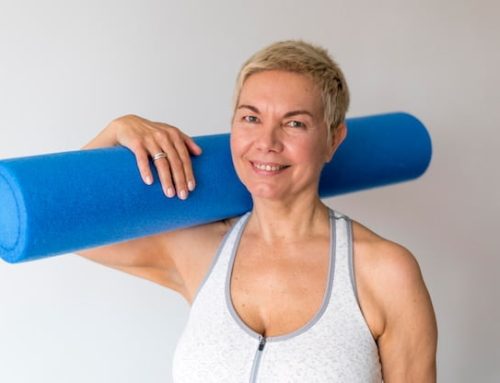The Three Parts of Deep Fascia: What You Need to Know
If you’re an avid gym-goer or an athlete, then you’re probably familiar with foam rolling. Foam rolling is a self-myofascial release technique that helps reduce muscle soreness, tightness, and inflammation. It works by applying pressure to your muscles and fascia, which are the connective tissues that surround your muscles, bones, and organs.
One of the key players in foam rolling is the deep fascia. Fascia is a web-like network of connective tissue that envelops and supports your muscles and other body structures. It also helps transmit force and tension from one part of your body to another. There are three main parts of the deep fascia, and in this article, we’ll take a closer look at each one.
The Epimysium
The epimysium is the outermost layer of the deep fascia. It surrounds entire muscle groups and helps protect them from friction and damage. The epimysium is made up of collagen fibers that are arranged in parallel bundles, which gives it its strength and durability.
When you workout, your muscles undergo stress and strain, which can cause micro-tears in the muscle fibers. While this is a normal part of muscle growth and repair, it can also lead to muscle soreness and inflammation. Foam rolling over the epimysium can help break up adhesions and trigger points, which can improve blood flow and reduce muscle tightness.
The Perimysium
The perimysium is the middle layer of the deep fascia. It surrounds individual muscle fibers and divides them into small bundles called fascicles. The perimysium is also made up of collagen fibers, but they are arranged in a criss-cross pattern, which allows for a greater range of motion.
Foam rolling over the perimysium can help release tension in your muscles and fascia, which can improve your flexibility and range of motion. When your fascia is tight and restricted, it can limit your ability to move freely and perform certain exercises, which can increase your risk of injury.
The Endomysium
The endomysium is the innermost layer of the deep fascia. It surrounds individual muscle fibers and provides them with nutrients and oxygen. The endomysium is made up of a thin layer of collagen fibers and other connective tissue.
Foam rolling over the endomysium can help improve your muscle function and recovery time. When your muscles are tight and inflamed, they can become less efficient and take longer to recover from a workout. By foam rolling over the endomysium, you can help increase blood flow and nutrient delivery to your muscles, which can speed up the healing process.
The Benefits of Foam Rolling
Foam rolling over the deep fascia can provide a number of benefits, including:
– Reduced muscle soreness: By breaking up adhesions and trigger points, foam rolling can help reduce muscle soreness and inflammation.
– Improved flexibility: By releasing tension in your muscles and fascia, foam rolling can help improve your range of motion and flexibility.
– Increased blood flow: By applying pressure to your muscles and fascia, foam rolling can help increase blood flow and nutrient delivery to your muscles.
– Increased relaxation: Foam rolling can also help promote relaxation and reduce stress, which can improve your overall well-being.
How to Foam Roll
To foam roll effectively, follow these steps:
1. Choose a foam roller: There are different types of foam rollers available, including soft, medium, and firm. Start with a softer foam roller if you’re new to foam rolling.
2. Target specific areas: Focus on the areas of your body that feel tight and sore. Common areas include your calves, IT band, glutes, and back.
3. Apply pressure: Position the foam roller under the targeted area, and slowly roll back and forth over the area. Apply enough pressure to feel a stretch, but not so much that it’s painful.
4. Spend time on each area: Spend at least 30 seconds rolling over each area, and use longer rolls of up to two minutes for major muscle groups, like the quads or back.
The Takeaway
Foam rolling is a simple and effective way to reduce muscle soreness, improve flexibility, and promote relaxation. By targeting the different layers of the deep fascia, you can improve your overall muscle function and recovery time. Remember to start with a softer foam roller if you’re new to foam rolling, and take your time to target specific areas of your body that feel tight and sore. With regular foam rolling, you can optimize your workouts and stay on top of your game.






